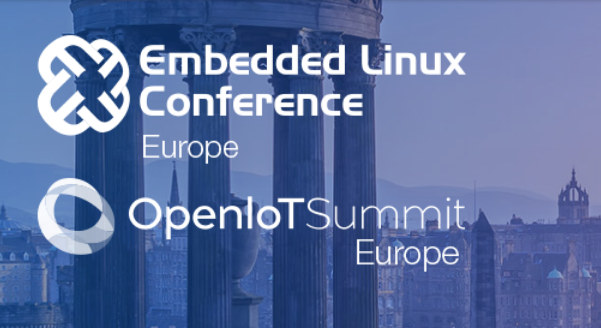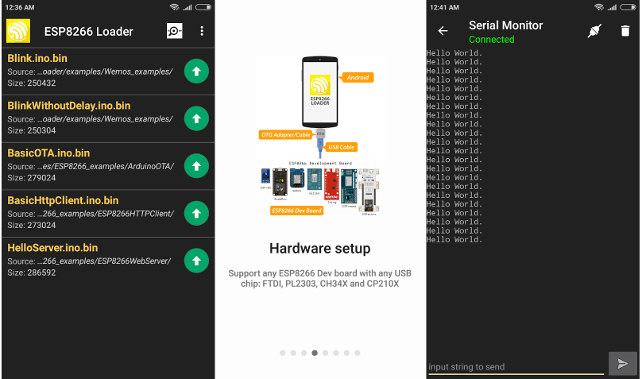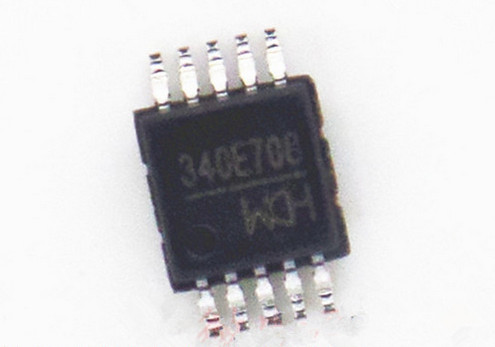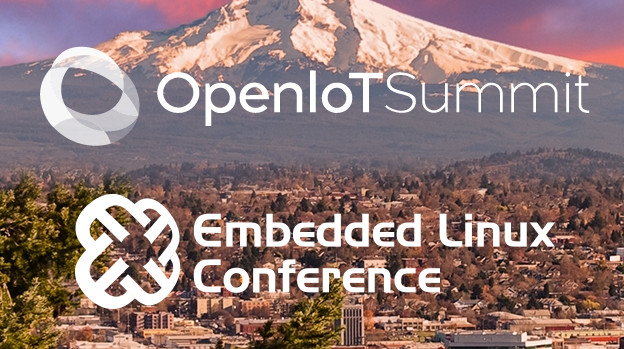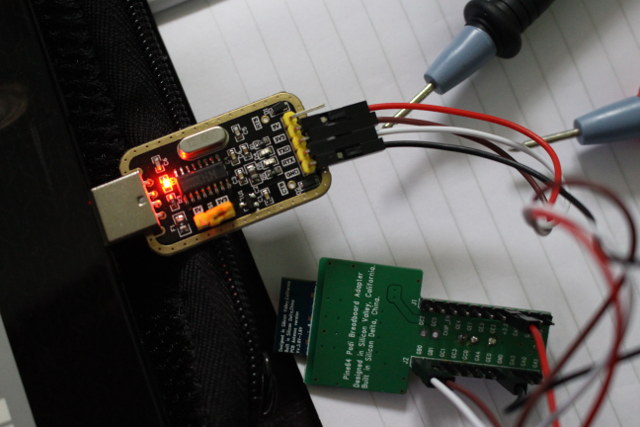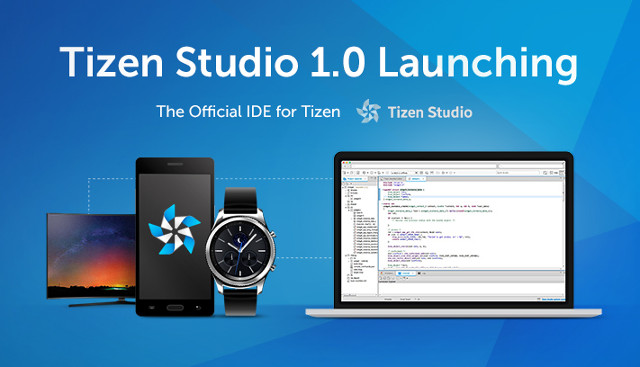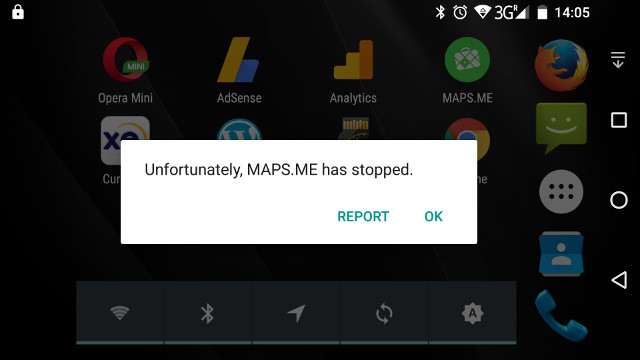The Embedded Linux Conference & OpenIoT Summit 2018 took place in March of this year in the US, but the European version of the events are now planned to take place on October 21-24 in Edinburg, UK, and the schedule has already been released. So let’s make a virtual schedule to find out more about some of interesting subjects that are covered at the conferences. The conference and summit really only officially start on Monday 22, but there are a few talks on Sunday afternoon too. Sunday, October 21 13:30 – 15:15 – Tutorial: Introduction to Quantum Computing Using Qiskit – Ali Javadi-Abhari, IBM Qiskit is a comprehensive open-source tool for quantum computation. From simple demonstrations of quantum mechanical effects to complicated algorithms for solving problems in AI and chemistry, Qiskit allows users to build and run programs on quantum computers of today. Qiskit is built with modularity and extensibility […]
ESP8266 Loader App Allows you to Flash and Debug ESP8266 Boards from Android Smartphones
In case you’d like to flash ESP8266 boards using a phone, you can now do so with ESP8266 Loader app for Android, which also gives you access to the serial console. All you’ll need to an Android smartphone with USB OTG support, a good USB cable, and a few ESP8266 boards such as Wemos D1 mini or NodeMCU. It should also be possible to use a TV box instead. Other listed features: Support any USB chip – CDC/ACM, FTDI, PL2303, CH34X and CP210X Change the SSID & password automatically durring upload No Ads (Pro version) Access to Google Drive storage (Pro version) Multiple upload widgets button (Pro version) That’s a free app with premium features, which also means it’s not open source, so any new features would have to be implemented by the developer. I asked him whether ESP32 boards were also supported, but he answered the app only works […]
WCH CH340E is a Tiny 10-Pin Serial to USB Chip
I own a bunch of USB to serial debug board based on CH340G/T or PL2303HX, and all include a crystal on the board with the exception of Hardkernel’s USB-UART module kit based on CP2104 (QFN24 package) working without crystal, hence smaller than most, but a bit more expensive than most. WCH has just released a new form version of their CH340 that does not require a crystal, comes in a tiny (3x3mm) MSOP10 package, and costs about 42 cents on Electrodragon (5 pieces). You’ll also find it for as low as 1 CNY ($0.15) on 1688.com. CH340E is slightly more expensive than CH340G, but considering you don’t need a crystal, and it will take less space on your PCB, total BoM cost for this USB to TTL function should be lower. Electrodragon reports that only two external parts are required, and they tested it up to 150,000 baud to flash […]
Embedded Linux Conference & Open Source Summit Europe 2017 Schedule
The Embedded Linux Conference & IoT summit 2017 took place in the US earlier this year in February, but there will soon be a similar event with the Embedded Linux Conference *& Open Source Summit Europe 2017 to take up in Europe on October 23 – 25 in Prague, Czech Republic, and the Linux Foundation has just published the schedule. It’s always useful to find out what is being discussed during such events, even if you are not going to attend, so I went through the different sessions, and compose my own virtual schedule with some of the ones I find the most interesting. Monday, October 23 11:15 – 11:55 – An Introduction to SPI-NOR Subsystem – Vignesh Raghavendra, Texas Instruments India Modern day embedded systems have dedicated SPI controllers to support NOR flashes. They have many hardware level features to increase the ease and efficiency of accessing SPI NOR […]
Embedded Linux Conference & OpenIoT Summit 2017 Schedule
The Embedded Linux Conference 2017 and the OpenIoT Summit 2017 will take place earlier than last year, on February 20 – 23, 2017 in Portland, Oregon, USA. This will be the 12th year for ELC, where kernel & system developers, userspace developers, and product vendors meet and collaborate. The schedule has been posted on the Linux Foundation website, and whether you’re going to attend or not, it’s always informative to check out the topics. So as usual, I’ll make a virtual schedule for all 5 days. Monday, February 20 For the first day, the selection is easy, as choices are limited, and the official first day it actually on Tuesday. You can either attend a full-day paid training sessions entitled “Building A Low Powered Smart Appliance Workshop“, and the only session that day: 14:30 – 15:20 – Over-the-air (OTA) Software Updates without Downtime or Service Disruption, by Alfred Bratterud, IncludeOS […]
Getting Started with Pine64 PADI IoT Stamp – Part 2: Serial Console, GCC SDK, Flashing & Debugging Code
PADI IoT Stamp module powered by Realtek RTL8710AF ARM Cortex M3 WiFi SoC is a potential competitor to Espressif ESP8266 modules. Pine64, the manufacturer of the module, sent me their kit with a $2 IoT stamp, a breakout board, a USB to TTL debug board and a J-Link debug board. In the first part of the review I’ve shown the hardware and how to assemble PADI IoT stamp kit. In the second part I’m going to write a tutorial / getting start guide showing how to control the board with AT commands, build the firmware with GCC SDK, and finally demonstrate how to flash and debug the firmware with the J-Link debugger. The Quick Start Guide indicates you need to connect the USB to TTL debug board to UART2 instead of UART1 as I did on the very similar B&T RTL-00 RTL8710AF module, and set connection settings to 38400 8N1. […]
Tizen Studio 1.0 Replaces Tizen SDK for Smartphones, Wearables and TVs
Tizen has converged all Tizen SDK for mobile, wearables, and TV to Tizen Studio since the beginning of the month, and released Tizen Studio 1.0 for developers interested in developing app for Tizen smartphones, TVs and/or smartwatches such as the latest Samsung Gear S3. So instead, you’ll now be able to select the targets platform and profiles within Tizen Studio. Some of the key changes made to the development environment in Tizen Studio 1.0 include: Launching tools: Installer, Uninstaller, and Package Manager Developing tools: IDE perspective theme, Project Wizard, Certificate Manager, and Menu and tool icons UI tools: UI Builder, Component Designer, and EDC Editor Testing tools: Emulator Testing tools: Dynamic Analyzer for memory and CPU profiling Other improvements in Tizen application development environment Tizen Studio is available for the 32-bit and 64-bit version of Windows, and Ubuntu, as well as for Mac OS with one version with the graphics […]
How Fix Apps Crashing at Launch in Android 6.0 (in Mediatek Phones) ?
I’ve recently received a new Android 6.0 Marshmallow smartphone powered by Mediatek Helio X20 processor, namely Vernee Apollo Lite, and one of the issues I encountered is that some applications such as Firefox and MAPS.ME would crash when I tried to launch them. The problem was reproducible 100% of the time, and occurred from the very first time I tried to start the app. I’d get a message like “Unfortunately MAPS.ME has stopped” with two buttons: REPORT or OK. So I asked on Vernee forums to report the issue, and see if other people had the same problem. One replied had the same problem, but a simple reboot would fix the issue, while the other proposed to clear the cache. I had not considered that option since the crash occurred from the very first time, but I tried anyway. Go to the App list, drag and drop the problematic app […]


